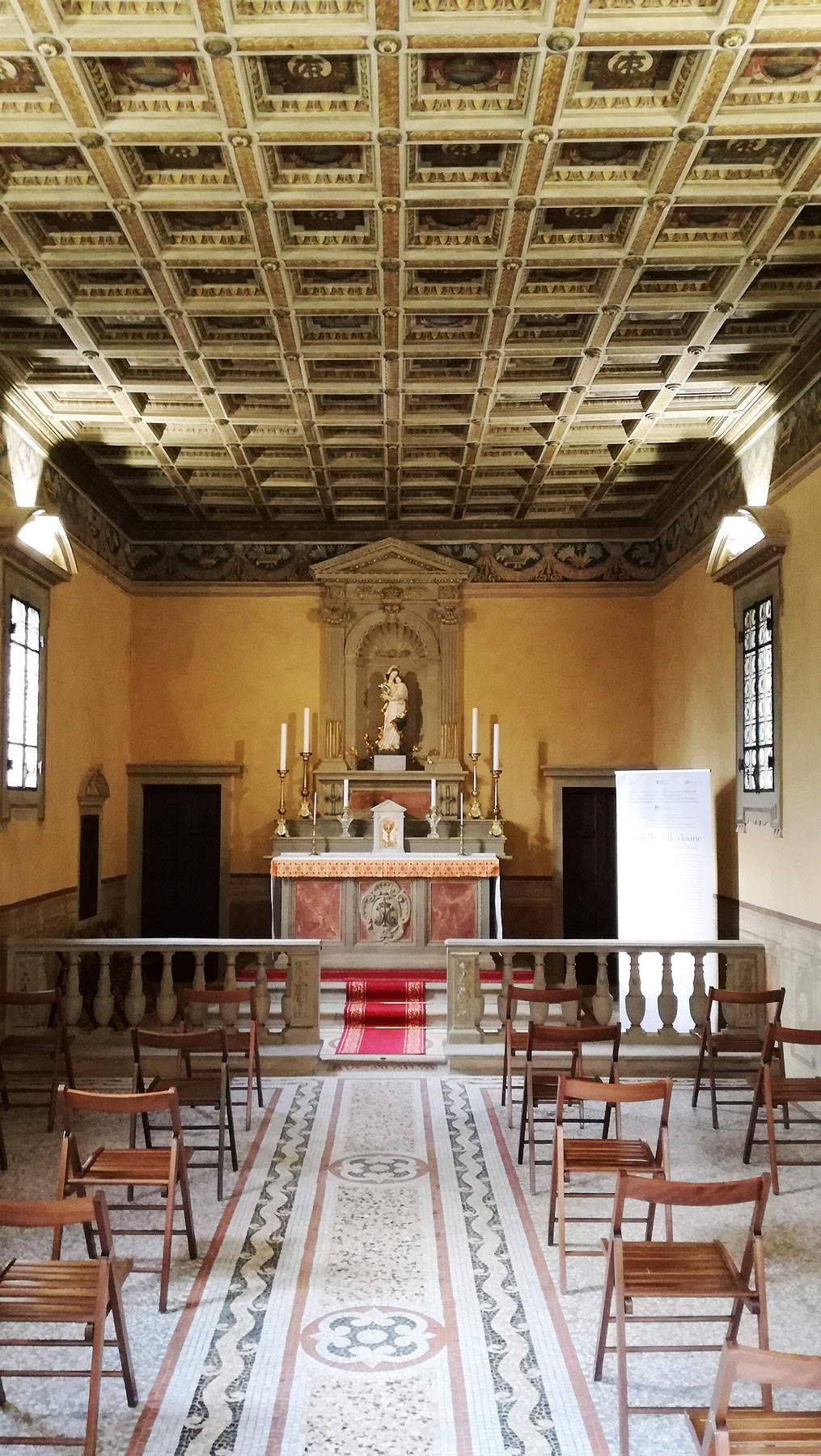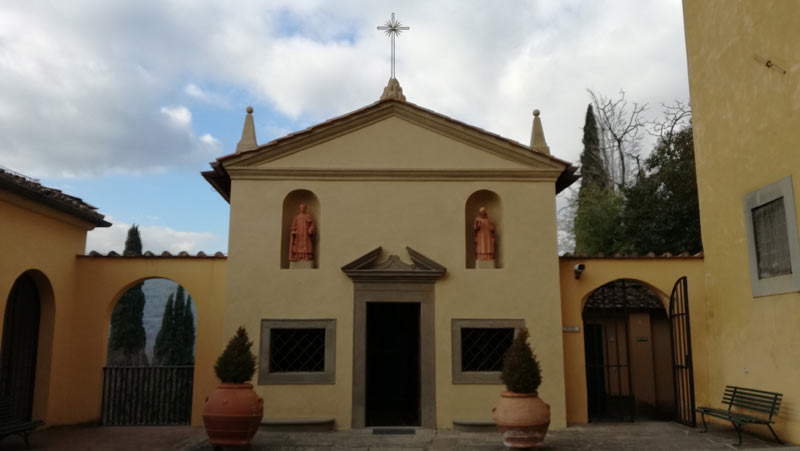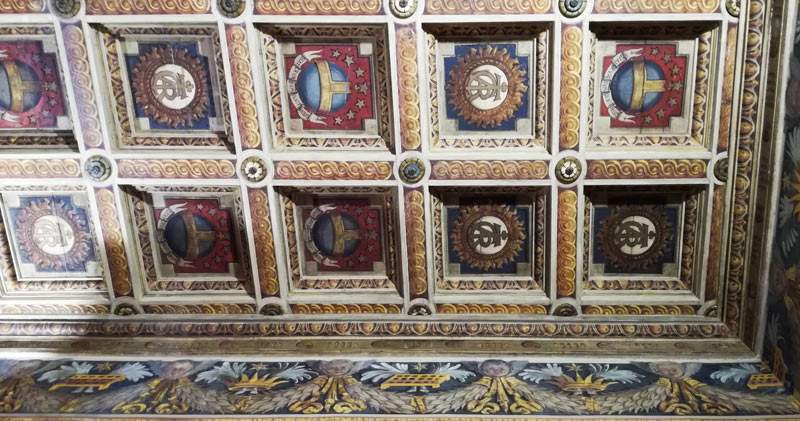Florence Charterhouse: after two years of work, women's chapel reopens
The restoration of the Women’s Chapel, the small chapel that stands at the edge of the entrance court of the Florence Charterhouse, has been completed. It was certainly built to allow women to attend the Eucharistic celebration or even simply to pray. Women, in fact, could come to the Charterhouse as far as this small courtyard, but they could go no further: the Carthusian Order was, from its origins, a strictly cloistered monastic formation. An Order entirely dedicated to prayer and hermit life, albeit with a communal lifestyle.
The return of the Women’s Chapel to prayer came at the end of a complex and delicate restoration project that lasted two years and was made possible thanks to the CR Florence Foundation, which allocated 220,000 euros for the work. The restorations involved the entire building, for which it was necessary to completely remake the roof and the four facades, which, considering the different characteristics and finishes they presented, were analyzed individually. Restoration then involved the building’s interiors, starting with the church hall itself with its pictorial decorations and striking coffered ceiling. In addition to these operations, work was carried out to adapt and upgrade the systems, both electrical and thermal. To complete the work, the recovery of the rooms located on the lower levels will soon be started, an intervention that will require a new project.
 The
The The women’s chapel of the
The women’s chapel of the The women’s chapel of the
The women’s chapel of theThe history of the Chapel of the Women
In a document from 1665 it is referred to as the new chapel in the square. Also in the printed view, engraved by Alessandro Cecchini in the late 17th century, it is described as Sacellum novum S. Laurentii (New Oratory of San Lorenzo). Its architect is unknown. It is a very architecturally linear building. And it was necessary to build high substructures (also being restored) because of the steep slope of the mountain. The Chapel was dedicated to St. Lawrence-a martyr in Rome in the 3rd century-as was already the main church of the Charterhouse.
The 1861 Guide to the Carthusian Monastery lists a painting of St. Lawrence by Giacinto Butteri on the altar, but it was definitely by Giacinto Botti, a Florentine painter (1603-1679). Curiously, in documents of the time concerning the Charterhouse (Florence State Archives, Conventi soppressi 51, filza n. 12), the painter is referred to as Giacinto Botteghi, who had painted other canvases for the Charterhouse at that time. Giuseppe Bacchi’s 1930 Guide informs us that the Chapel was destroyed by fire in 1914, but in this same year it was rebuilt with a graceful and elegantly decorated interior in a 16th-century style: this is the same one that can be admired after the restoration. The Guide adds that it previously contained the painting by Botteghi (or rather, Botti) and a St. Nicholas by Rossi, evidently destroyed during the fire. Rossi is identified as Giovanni Paolo Roffi, a mediocre painter and brother of a prior of the Carthusian monastery, who worked here precisely in the 1760s.
At the time of the 1914 reconstruction, moreover, it is likely that the Chapel was dedicated to Our Lady in honor of the women who were allowed to attend it freely. It is not known whether the two terracotta statues in the niches on the façade, representing St. Bruno, Founder of the Carthusians, and St. Lawrence, are from the same period as the primitive construction. They would appear, rather, to be a little later, perhaps eighteenth century or they may have been remade after the fire because they seem well preserved. Today this historic place of worship reopens to the public.
The opening ceremony was held this morning in the presence of Cardinal Giuseppe Betori (Archbishop of Florence), Luigi Salvadori (President of the Fondazione CR Firenze), Andrea Pessina (Superintendent of Archaeology, Fine Arts and Landscape for the metropolitan city of Florence and the provinces of Pistoia and Prato), Don Carmelo Mezzasalma (superior of the Community of San Leolino), Giovanni Leoncini (art historian and Certosa historian), Valerio Tesi (architect in charge of the project on behalf of the Superintendency) and Antonio Fara (architect in charge of the construction management on behalf of the Archdiocese).
“I am very pleased to be able to welcome the conclusion of the restoration of the Women’s Chapel in the monumental complex of the Certosa of Florence,” says Cardinal Giuseppe Betori, Archbishop of Florence , “particularly for the beautiful and constructive collaboration that led to its realization and that saw the Superintendence of Florence, the Archdiocese of Florence and the Community of San Leolino active, with the generous and indispensable help of the Fondazione Cassa di Risparmio di Firenze. The Women’s Chapel is dedicated to the Blessed Virgin Mary, the central figure of this Advent season, and is a welcoming symbol of the entire complex. It is very significant that we were able to restore it to give a further sign of the role that the Carthusian Monastery today intends to carry out as a center of spiritual and cultural welcome and promotion for the city and beyond.”
“Our contribution to the recovery of this beautiful chapel,” says the President of Fondazione CR Firenze, Luigi Salvadori, “is part of the important line of interventions aimed at the conservation and enhancement of our rich artistic heritage. I recall, just referring to the latest works, the recent restoration of the interior decorative apparatus of the church of San Giorgio e Santo Spirito alla Costa, the restoration of the Porta dei Cornacchini of our Cathedral, and the consolidation of the Seminario Maggiore. In this context and to support the valuable work of restorers, who have been greatly affected by the pandemic, we have also promoted the Firenze Restaura call for proposals which, in its three editions and with a total allocation of 754,000 euros, has enabled the activation of as many as 66 projects between Florence and neighboring municipalities. The call is expressly aimed at the conservation and restoration of churches and the precious artifacts preserved therein, which, also because of their historical and artistic value, must not be dispersed at all.”
For info Certosa: Certosa di Firenze, Via della Certosa 1, Galluzzo, Florence (location: https://goo.gl/maps/W9tRUyvVBjiUuFuv5) Phone +39 055 2047729 www.certosadifirenze.it certosanews@gmail.com
The Certosa is open daily (except Monday and Sunday mornings) 10 a.m.-12 p.m. | 3 p.m.-6 p.m. Admission 5 euros; the price also includes a guided tour of the Certosa every day-excluding Monday and Sunday mornings-at 10 a.m., 11 a.m., 3 p.m., 4 p.m. (and 5 p.m. until the end of October 2021).
 |
| Florence Charterhouse: after two years of work, women's chapel reopens |
Warning: the translation into English of the original Italian article was created using automatic tools. We undertake to review all articles, but we do not guarantee the total absence of inaccuracies in the translation due to the program. You can find the original by clicking on the ITA button. If you find any mistake,please contact us.



























